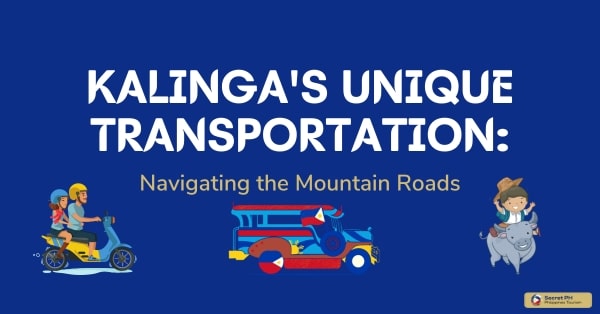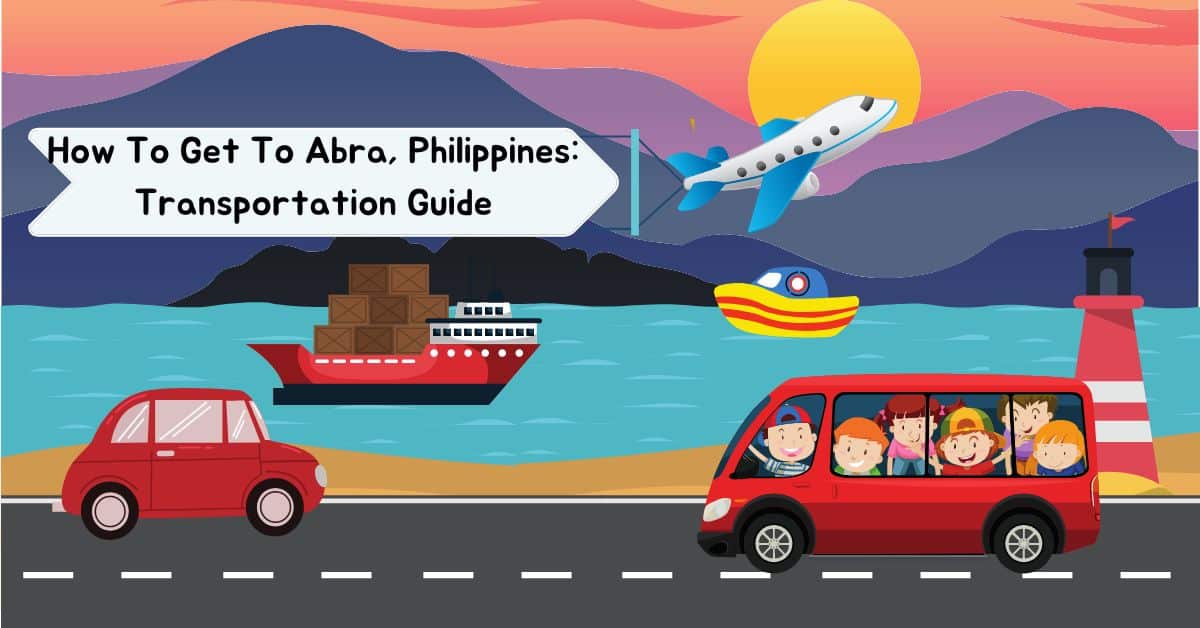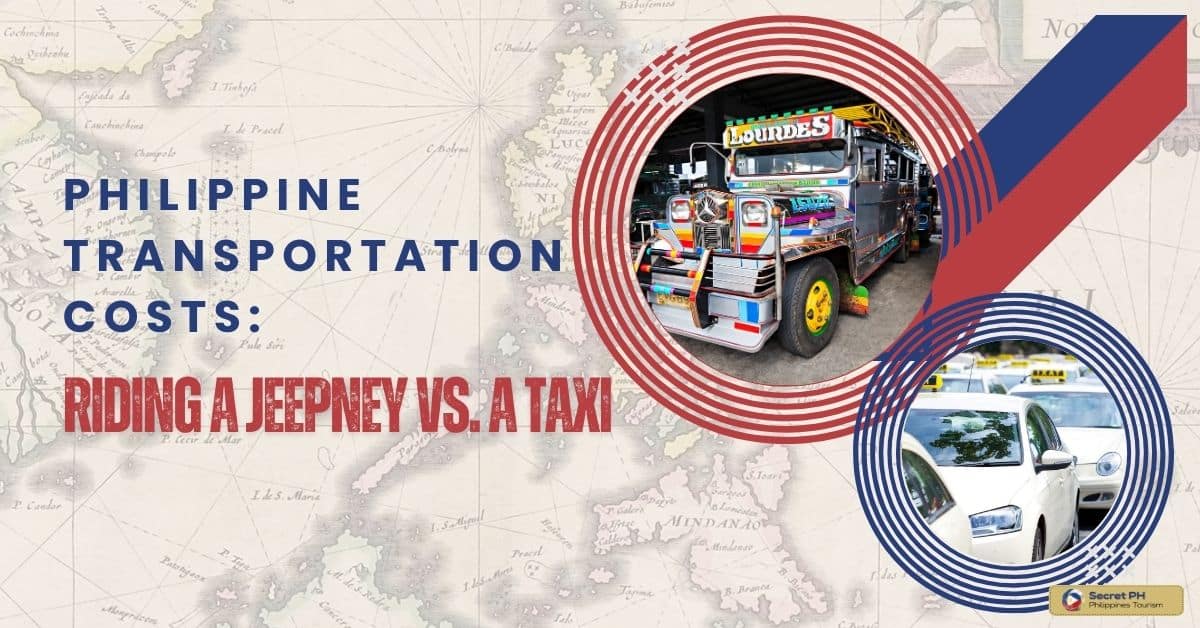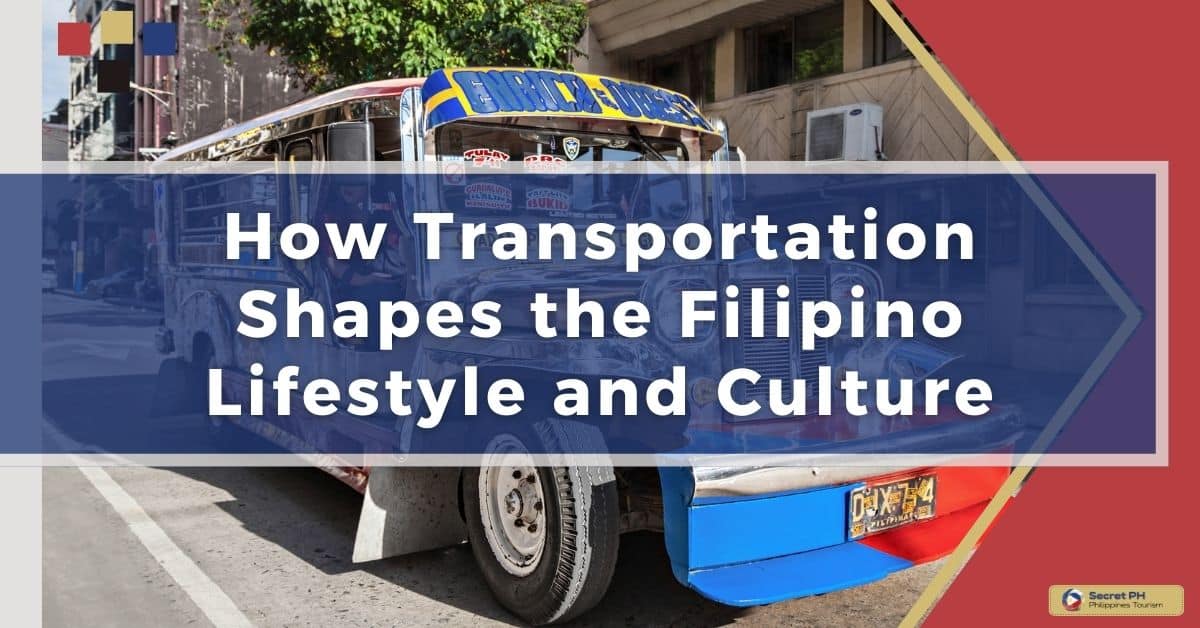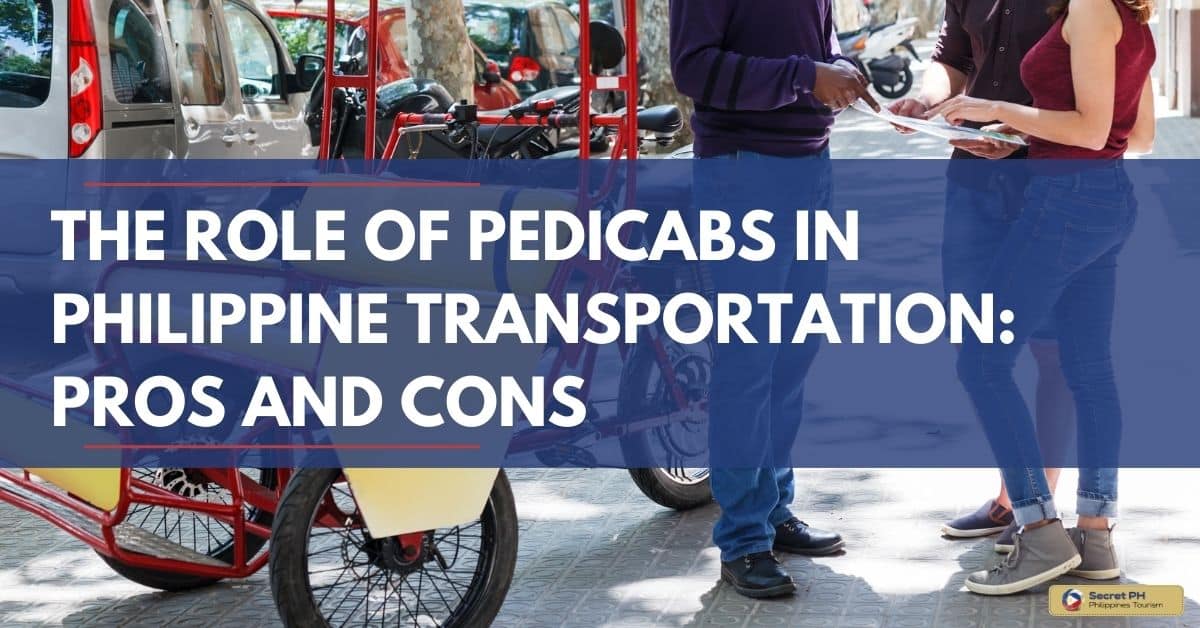Commuting in Metro Manila is a daily reality for millions of people who rely on public transportation or private vehicles to get to work, school, or other destinations.
Commuting in Metro Manila comes with direct costs such as the fare or gas expenses, as it also includes indirect costs such as the time and energy spent in traffic, the physical and mental toll on health and well-being, and the impact on the environment.
This comprehensive guide aims to provide a thorough analysis of the different costs associated with commuting in Metro Manila, as well as strategies and recommendations for reducing its negative effects on commuters and the city as a whole.
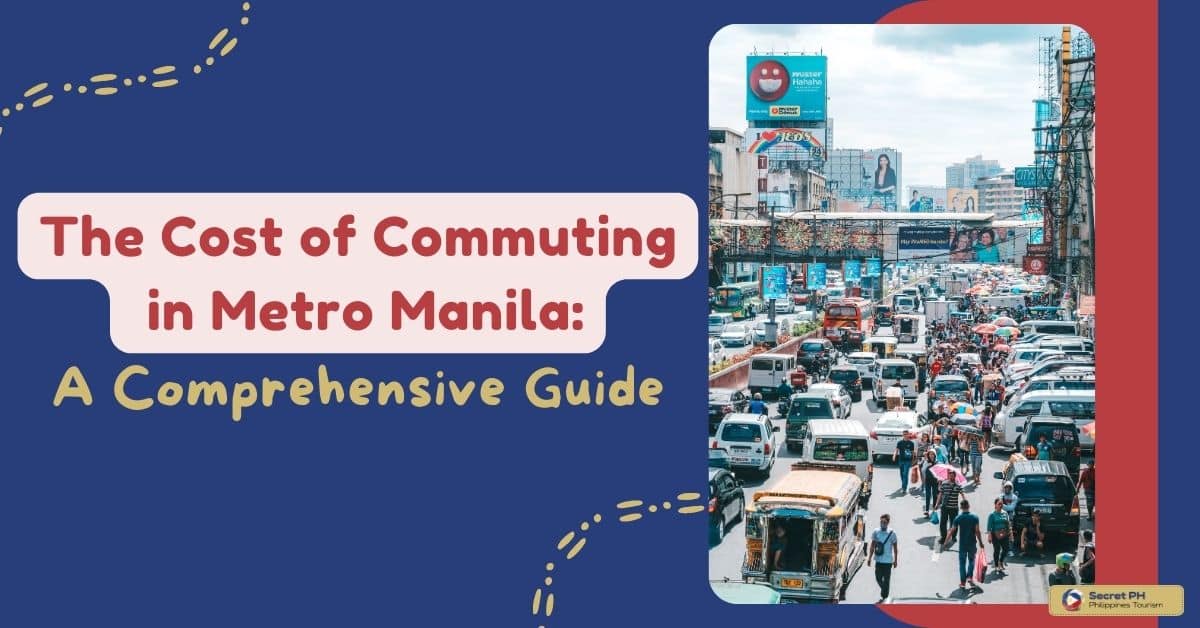
Understanding the True Cost of Commuting
To truly understand the cost of commuting in Metro Manila, it’s essential to look beyond the direct expenses of transportation. These direct costs include fare or fuel expenses, toll fees, and parking fees, among others. However, there are also indirect costs that add up and affect commuters’ daily lives.
These indirect costs include the time and energy spent in traffic, which can be substantial in Metro Manila due to the high congestion levels. Commuters can spend several hours daily stuck in traffic, leading to a loss of productivity and increased stress levels.
Moreover, the physical and mental toll on health and well-being is also a significant indirect cost of commuting in Metro Manila. Commuters are exposed to air pollution and noise pollution, which can lead to respiratory problems, cardiovascular diseases, and stress-related illnesses.
The long hours spent sitting in vehicles can also lead to physical inactivity and a sedentary lifestyle, which can contribute to obesity and other health issues.
Understanding the true cost of commuting is essential for commuters, policymakers, and city planners to make informed decisions and take steps to mitigate the negative impacts of commuting on individuals and the city.
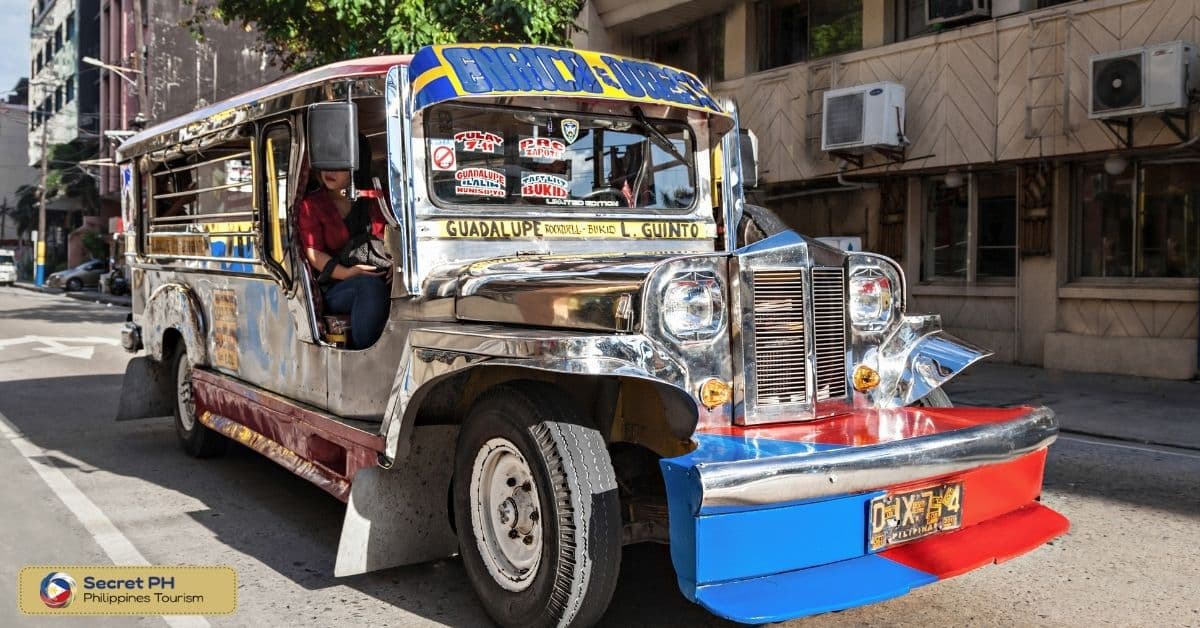
Direct Costs of Commuting in Metro Manila
Metro Manila is an urbanized city with millions of commuters relying on public transportation or private vehicles to get around every day. Various costs are associated with commuting in this megacity, including direct expenses such as fare and fuel costs, toll fees, parking fees, and car maintenance expenses.
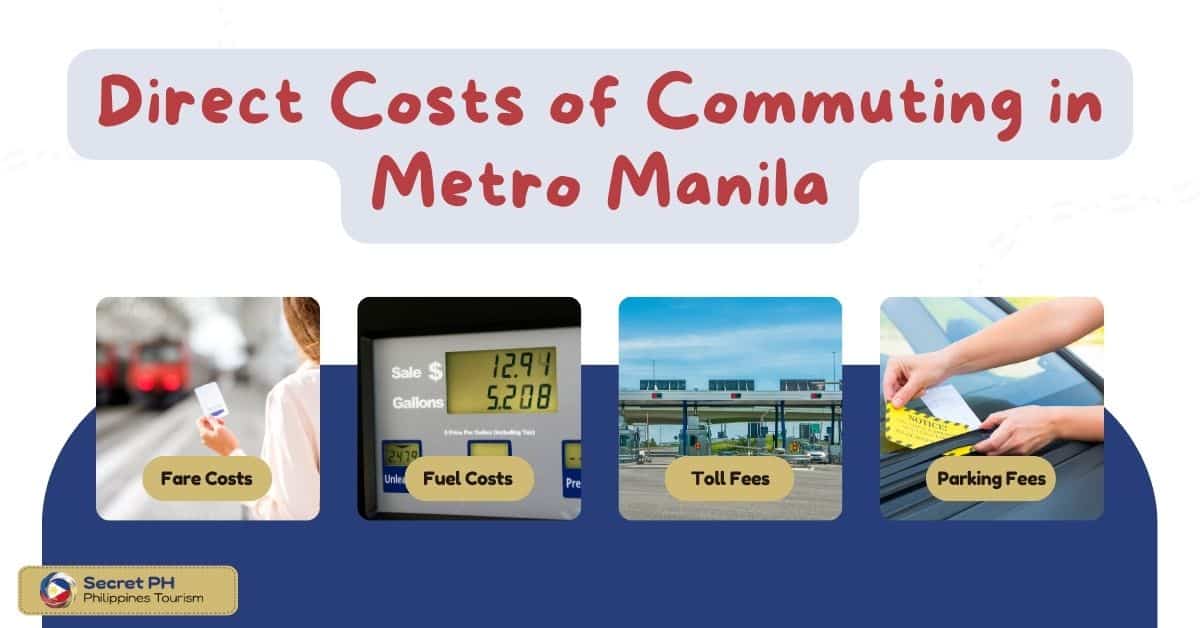
Fare Costs
One of the most common direct costs associated with commuting in Metro Manila is fare costs. Taking public transportation such as buses, jeepneys, and the train system requires the payment of fares to ride. Furthermore, taxis and tricycles also require payment of fares when used.
Fuel Costs
Another direct cost associated with commuting in Metro Manila is fuel costs. Private vehicles such as cars and motorcycles require gasoline or diesel to run, and the cost of fueling up can be significant if done regularly.
Toll Fees
The toll fees for certain highways in Metro Manila are also a direct cost associated with commuting. Drivers must pay the fee when passing through these roads, which can add up depending on the frequency of use.
Parking Fees
Lastly, parking fees are also a direct cost associated with commuting in Metro Manila. Many establishments and public areas require drivers to pay a fee if they wish to park their vehicles there, which can be expensive depending on the length of stay.
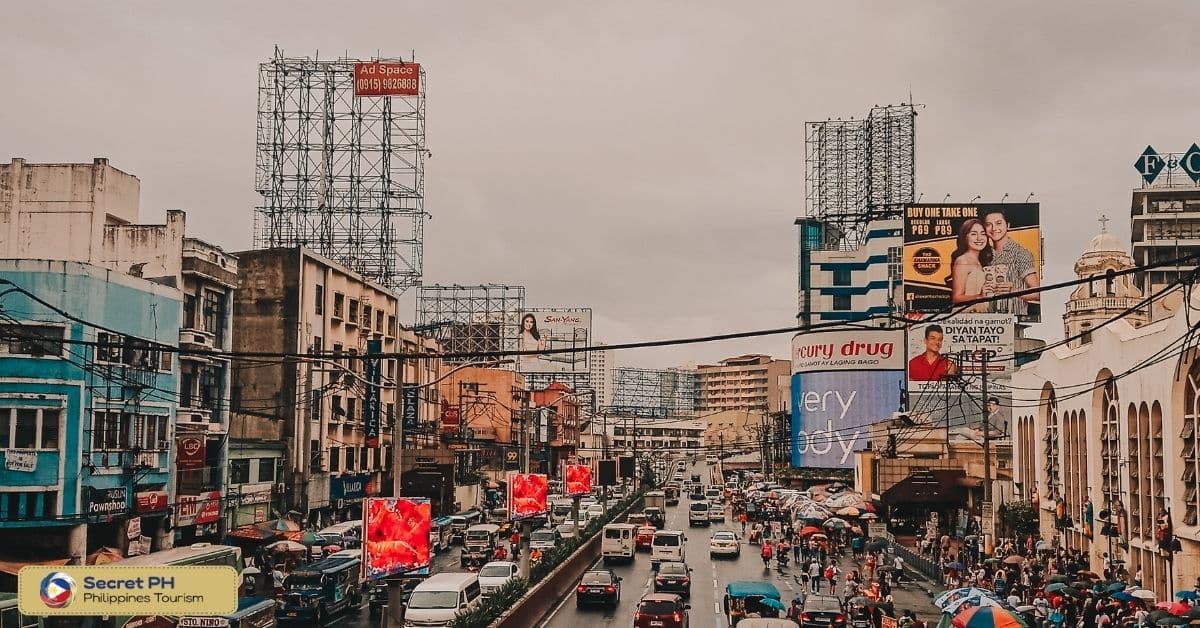
Indirect Costs of Commuting in Metro Manila
In addition to the direct expenses associated with commuting in Metro Manila, there are also indirect costs that can have a significant impact on commuters and their daily lives. These indirect costs include time and energy spent in traffic, physical and mental tolls on health and well-being, and environmental impacts.
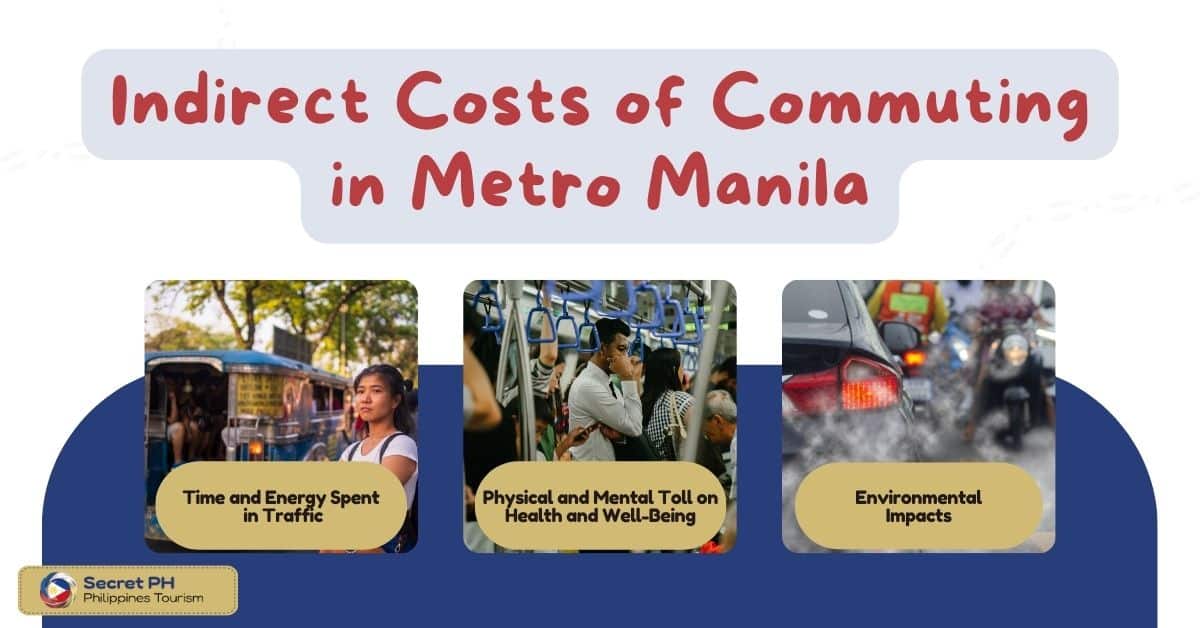
Time and Energy Spent in Traffic
One of the most significant indirect costs associated with commuting in Metro Manila is the time and energy spent in traffic. The city is well known for its high congestion levels, particularly during peak hours, which can lead to long delays on the road. Commuters can spend several hours stuck in traffic every day, leading to a loss of productivity and increased stress levels.
Physical and Mental Toll on Health and Well-Being
The physical and mental toll on health and well-being is also an indirect cost associated with commuting in Metro Manila. Commuters are exposed to air pollution and noise pollution while traveling, which can lead to respiratory problems, cardiovascular diseases, and stress-related illnesses. The long hours spent in vehicles can also contribute to physical inactivity and a sedentary lifestyle, which can lead to obesity and other health issues.
Environmental Impacts
Finally, the environmental impacts of commuting must be taken into consideration when assessing the cost of commuting in Metro Manila. Private vehicles emit greenhouse gases, which can contribute to climate change and air pollution. Furthermore, the traffic congestion that is common in the city can also lead to an increase in energy consumption and carbon emissions.
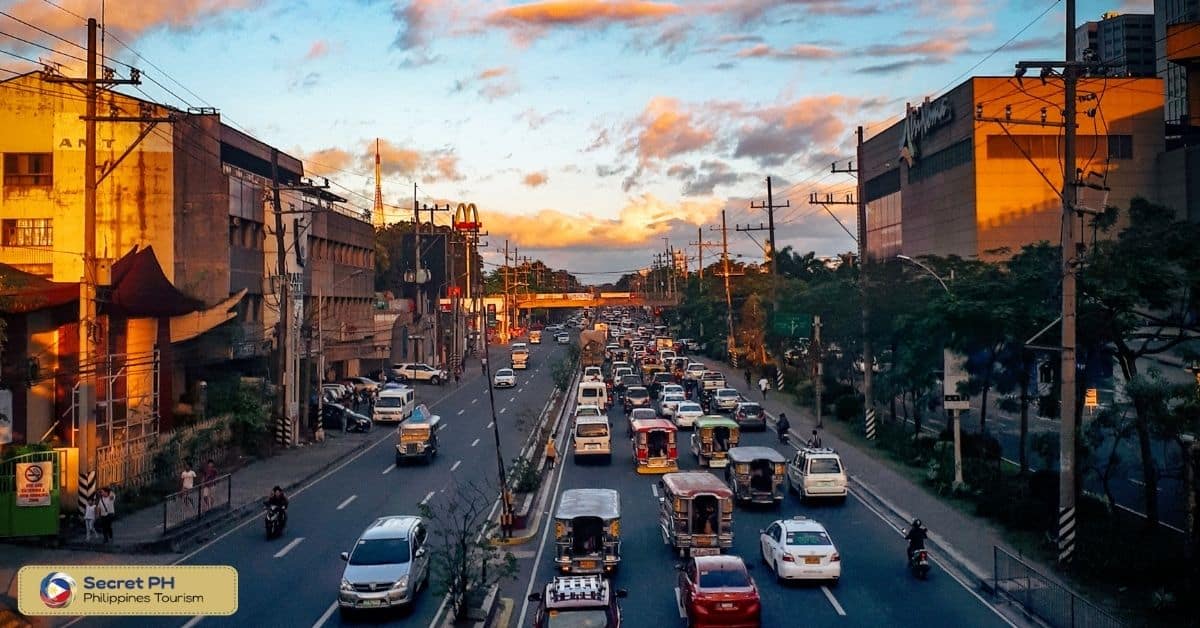
Impact of Commuting on Health and Well-being
The physical and mental toll of commuting on health and well-being can be immense in Metro Manila. Spending time stuck in traffic can lead to increased stress levels. Which can take a toll on physical and mental health over time.
Furthermore, exposure to air pollution while traveling can lead to respiratory problems such as asthma and other cardiopulmonary diseases. Additionally, people who rely on private vehicles to get around are more likely to have a sedentary lifestyle. Which can lead to obesity and other health issues.
Taking steps to reduce the negative impacts of commuting on health and well-being is essential for commuters in Metro Manila. Investing in public transportation infrastructure such as trains and buses can reduce traffic congestion levels. Leading to shorter travel times and reducing the time spent stuck in traffic.
Moreover, policies that encourage walking or biking as forms of transportation can help promote physical activity and a healthier lifestyle. Additionally, investing in green technology for private vehicles can help reduce carbon emissions and air pollution.
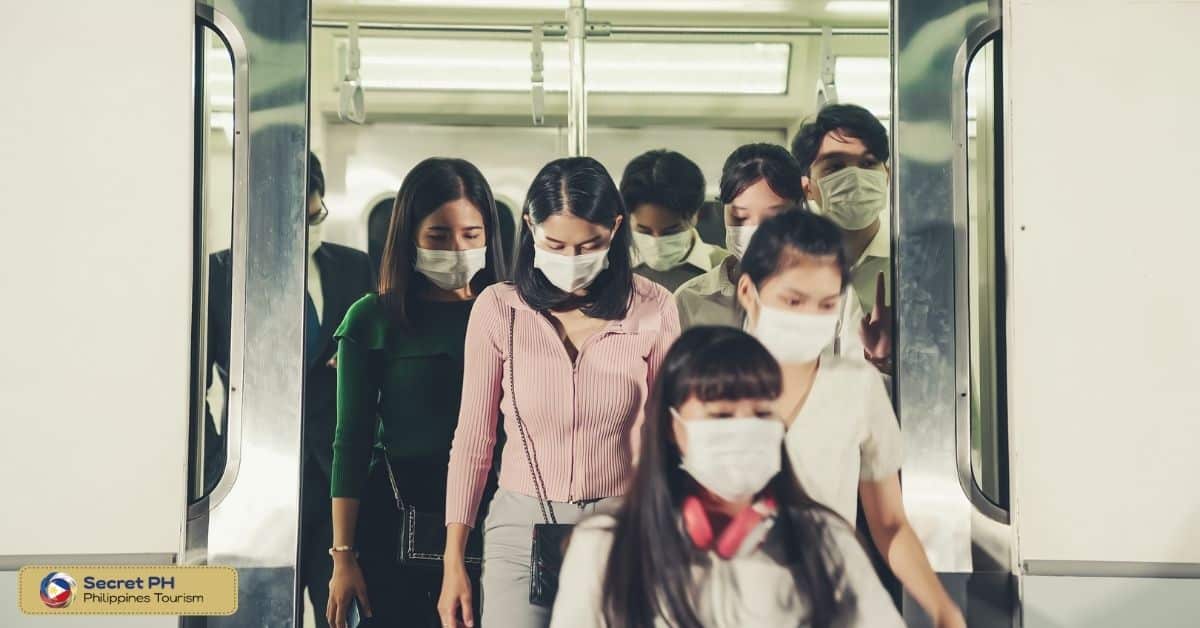
Strategies for Reducing the Cost of Commuting
Commuting in the megacity can be expensive and time-consuming, leading to losses in productivity and physical and mental health problems.
Understanding the different costs associated with commuting — direct and indirect — is essential for commuters, policymakers, and city planners to take steps to reduce the negative impacts of commuting on individuals and the city.
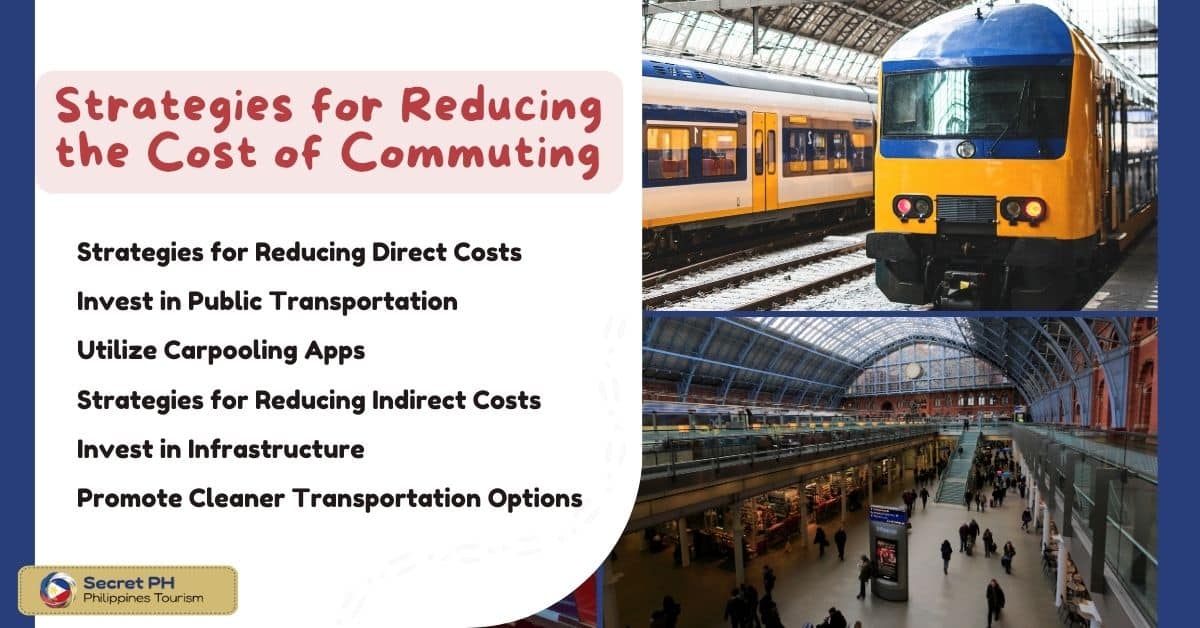
Strategies for Reducing Direct Costs
The direct costs associated with commuting in Metro Manila — such as fare costs, fuel expenses, toll fees, and parking fees — can add up quickly. Taking steps to reduce these direct costs can help commuters save money and time.
Invest in Public Transportation
One of the best ways to reduce the direct costs associated with commuting is to invest in public transportation infrastructure. Metro Manila has an extensive train system, as well as buses and other forms of public transportation. Investing in these systems can help reduce travel times and make public transportation more accessible, which can help reduce fare costs.
Utilize Carpooling Apps
Carpooling apps such as Angkas and Wunder are becoming increasingly popular in Metro Manila. As a way to reduce fuel expenses and toll fees. These apps allow commuters to share rides with other users and split the cost of the trip. Leading to substantial savings for all parties involved.

Strategies for Reducing Indirect Costs
In addition to the direct costs associated with commuting in Metro Manila, there are also indirect costs. Such as time and energy spent in traffic, the physical and mental toll on health and well-being, and environmental impacts. Taking steps to reduce these indirect costs can help commuters save time and money, while also promoting a healthier lifestyle.
Invest in Infrastructure
Building and improving infrastructure such as roads and bridges can help reduce the time spent stuck in traffic, making commuting more efficient. This could include investing in better public transportation systems or expanding existing ones. Additionally, creating dedicated lanes for bicycles and electric scooters can also help reduce traffic congestion, leading to shorter travel times.
Promote Cleaner Transportation Options
Using cleaner transportation options such as electric vehicles or environment-friendly fuels can help reduce air pollution and the physical and mental toll of commuting on health and well-being. Additionally, promoting walking or biking as a form of transportation can also help reduce air pollution and promote physical activity.
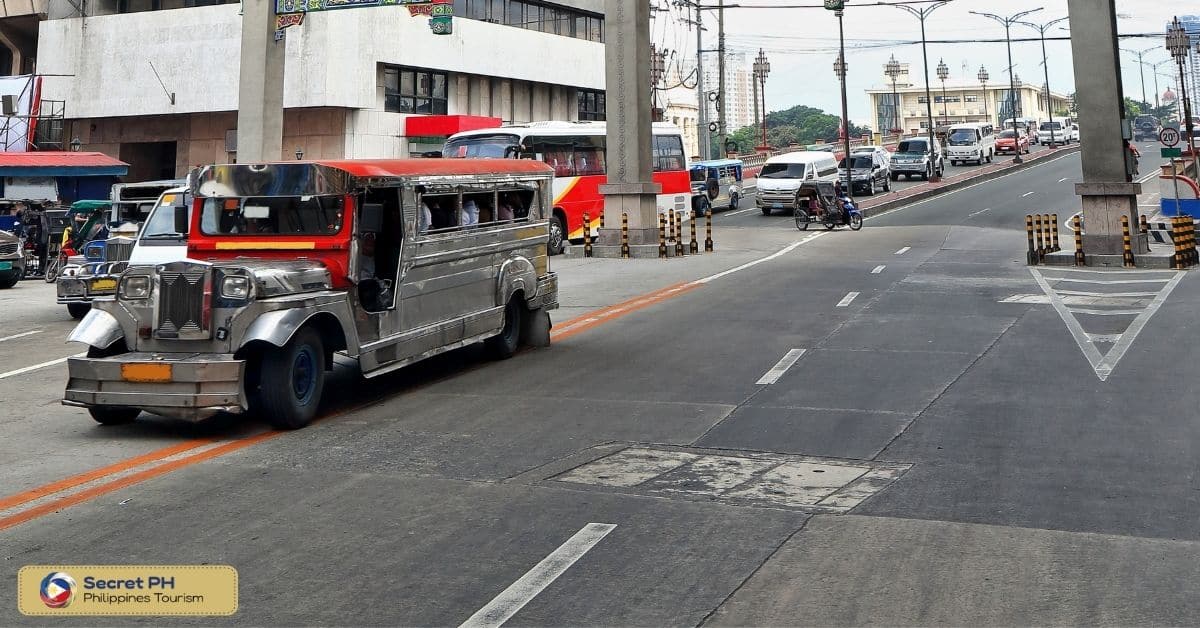
Public Transportation Options in Metro Manila
Metro Manila is one of the most populous cities in the world. Millions of people rely on public transportation to get around every day. With a population of over 13 million, Metro Manila has an extensive network of public transport options that are available for commuters.
This comprehensive guide will provide an overview of the different public transportation options available in the city.
Trains: Metro Manila is served by an extensive train system consisting of three lines. The Light Rail Transit (LRT), Metro Rail Transit (MRT), and Philippine National Railways (PNR). The LRT and MRT lines provide efficient services to the city’s major transport hubs and business districts. The PNR line operates primarily along the south coast.
Buses: Metro Manila has an extensive network of public buses that serve various parts of the city. Buses provide an efficient and economical way to get around the city, but they can be crowded during peak hours.
Jeepneys: A type of bus that is unique to the Philippines. These vehicles are brightly colored and have an open-air seating arrangement, making them popular with tourists. Jeepneys offer a cheap way to get around the city but can be crowded during peak hours.
Taxis: Taxis are widely available in Metro Manila, offering a convenient and relatively safe way to get around the city. Taxis can be hailed from the street or booked online, making them an easy and affordable option for commuters.
Tricycles: A type of three-wheeled vehicle commonly used in Metro Manila. These vehicles offer a cheap way to get around the city. But they can be dangerous due to the lack of safety features.
E-Scooters: This become increasingly popular in Metro Manila as a cleaner and more efficient way to get around the city. These vehicles offer a convenient and affordable way to get around, with some companies offering free rides for regular users.
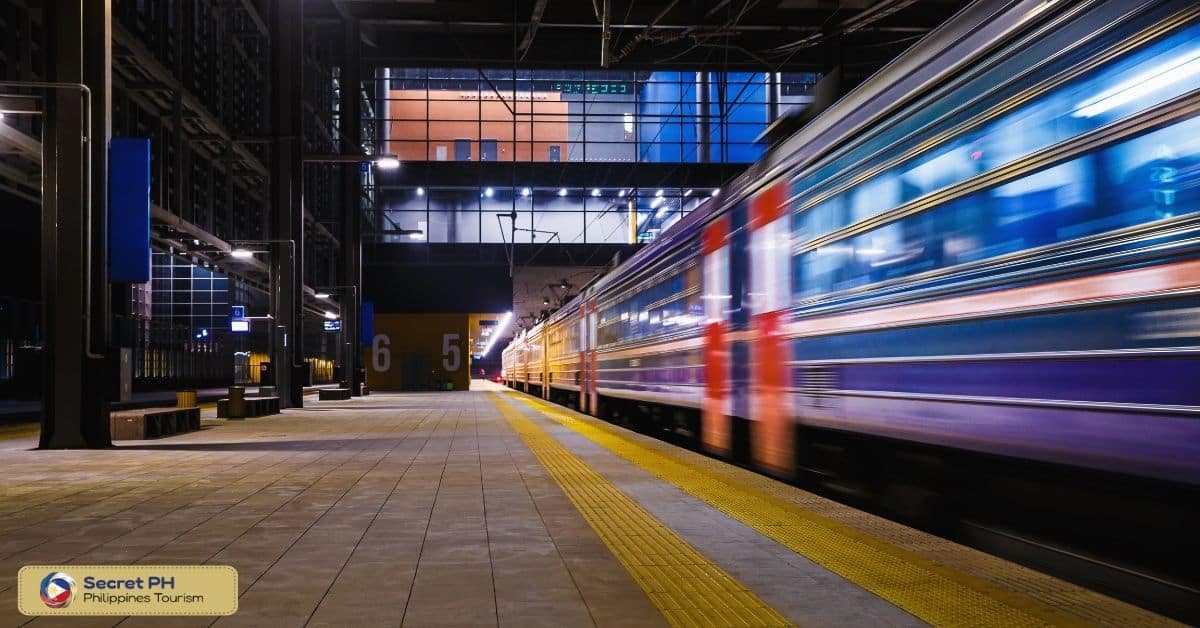
Commuting by Car in Metro Manila
Commuting by car in Metro Manila can be a practical solution for those who need flexibility and convenience when traveling around the city. Cars are relatively safe and comfortable. Allowing drivers to travel at their own pace while avoiding traffic jams, delays, and other inconveniences that come with public transportation.
However, cars can be expensive to maintain and operate due to fuel costs, toll fees, parking charges, and other direct expenses. Additionally, traffic congestion is a major issue in the city, leading to long delays and increasing air pollution. For these reasons, it is important to consider the cost of commuting by car before making the decision to drive in Metro Manila.
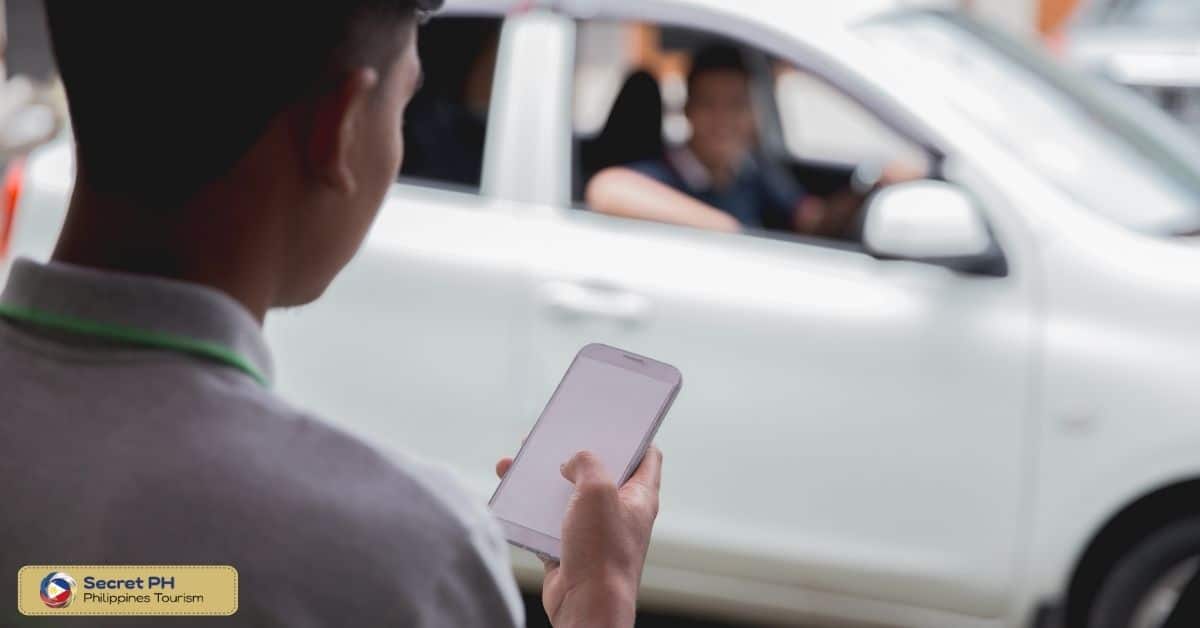
The Future of Commuting in Metro Manila
The future of commuting in Metro Manila holds much promise for commuters. The city is currently making significant investments in infrastructure such as roads and bridges. As well as public transportation systems like the LRT and MRT trains.
Additionally, carpooling apps are becoming increasingly popular among commuters. Allowing them to save time and money while reducing their environmental impact.
In the future, Metro Manila could become a more sustainable and efficient city for commuters. Investment in clean technology such as electric vehicles and environment-friendly fuels can help reduce air pollution and promote a healthier lifestyle.
Additionally, policies that encourage walking or biking as forms of transportation could also help reduce traffic congestion levels. Leading to shorter travel times and greater productivity. Together, these measures can help to make commuting in Metro Manila a more enjoyable and cost-effective experience for all involved.
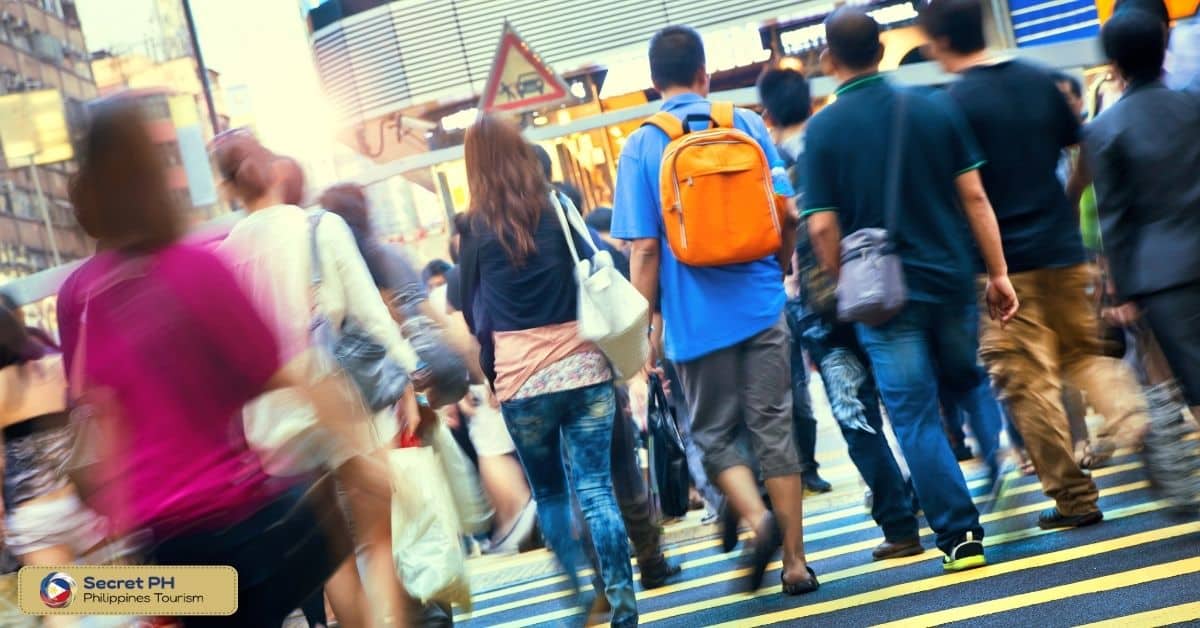
In conclusion
Commuting in Metro Manila can be expensive and time-consuming due to high levels of traffic congestion. It is important for commuters, policymakers, and city planners to consider the direct costs such as fare costs, fuel expenses, toll fees, and parking fees.
Additionally, reducing the indirect costs associated with commuting such as air pollution, stress, and physical inactivity is essential to promote a healthier lifestyle. To achieve this, investments must be made in public transportation infrastructure and clean technology for private vehicles. With the right strategies in place, Metro Manila could become a more efficient and sustainable city for commuters.

